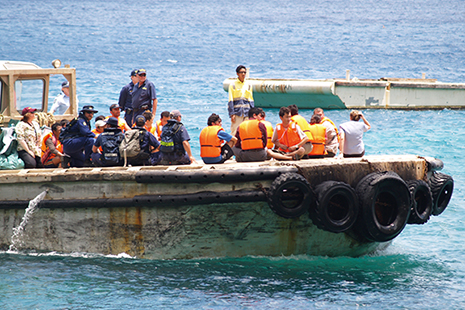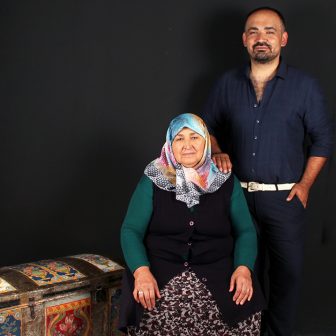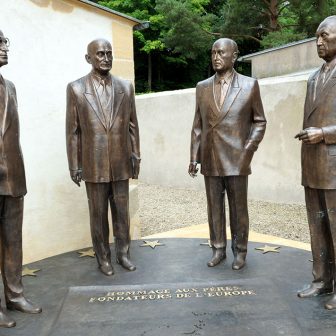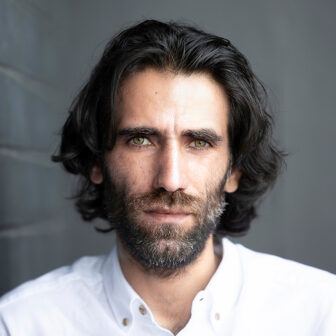On 9 November, after this article was published, Michelle Dimasi visited the asylum seekers on Christmas Island at the invitation of the Department of Immigration and Citizenship. She found that the families and other asylum seekers were being well cared for. The gate to the builder’s camp is no longer locked and guards are no longer stationed outside the entrance.
FIVE WEEKS AGO, Christmas Island made headlines when two groups of boat people were taken to this remote Australian island, 300 kilometres south of Java. These were the first boat arrivals since the Rudd government announced its changes to detention policy in late July, so their treatment gives an insight into how Labor’s new approach will work in practice.
The first group arrived on 30 September after being intercepted at Ashmore Reef by a Customs vessel, the ACV Triton. Aboard were twelve people, one female and eleven males from Afghanistan and Iran. A week later, on 7 October, the HMAS Larrakia picked up asylum seekers from a boat moored to an oilrig in the Timor Sea. This group consisted of fourteen asylum seekers: one female and thirteen males. Until their arrival, no one was living in either of the immigration detention facilities on the Christmas Island, although an Indonesian family has been in community detention, living in the Drumsite neighbourhood for nearly twelve months.
The 26 asylum seekers are being held in two facilities on the island: the Phosphate Hill Immigration Detention Centre – a series of demountable buildings opened in 2001 – and the builder’s camp. The Phosphate Hill centre is quite separate from the new $400 million mega-detention centre, which isn’t being used to house the new arrivals because it is too expensive to run with fewer than 100 residents. (Although it’s empty, the new centre operators employ a number of Islanders for cleaning, maintenance and security; at night, its lights are turned on, generating a luminous glow visible on the other side of the island.)
The builder’s camp, which accommodated some of the construction workers who built the new detention centre, provides an alternative to immigration detention. In August 2008, when DIAC sent up fifty stakeholders – including representatives of the Refugee Council of Australia, the UN High Commissioner for Refugees and Red Cross – to view the detention centres, both the camp’s and the old centre’s fences had been pulled down. Following the new arrivals, fences were erected around both. Recently, an extra fence was built around the electric and microwave fences at the mega-detention centre – not to keep future detainees from escaping but to stop the crabs from electrocuting themselves on the powered fences.
The Phosphate Hill centre and the builder’s camp are located on the aptly named Vagabond Road. It is on this road that the Christmas Island Recreation Centre – an $8 million payoff to the community by the Howard government for burdening them with the mega-detention centre – is also found. The Recreation Centre is situated at the top of the island on the way to the airport while most of the island’s facilities such as the shops and post office are located at the base of the island in an area called Settlement.
The department’s arrangements for detaining the recent arrivals are unclear. Its website provides a regularly updated summary of the number of people held in immigration and community detention. On 17 October 2008, according to the site, eight males were in detention at the Phosphate Hill centre. The rest of the group was being held in “Alternative Temporary Detention in the Community,” which the department defines as “detention in the community with a designated person in private houses; correctional facilities; watch houses; hotels; apartments; foster care and hospitals.”
Who are the eighteen people living in the builder’s camp, and should they be there? Currently, eight of the new arrivals are attending the Christmas Island school; because they are children they wouldn’t be held in the Phosphate Hill centre under Labor’s new policy. Of the other ten living in the builder’s camp, some could be unaccompanied minors and some or all could be parents of those attending the school. So at least eight children and an unknown number of family members are being held in alternative detention rather than being accommodated in community detention.
There is an obvious difference between accommodating a family in community detention and holding them in alternative detention on Christmas Island. Community detention means living amongst the Christmas Island community. Alternative detention means living separately from the community in an immigration detention centre deemed “alternative” because it accommodates mainly families.
This difference became apparent when I was recently in the Recreation Centre car park, which faces the entrance to the builder’s camp. The camp has a fence around it, similar to a pool fence. The front gate is locked and access is only available when a GSL officer unlocks the gate. GSL officers guard the entrance. It looks a lot like a detention centre – fenced, guarded, and under lock and key – and not much like the “community setting” the immigration minister, Chris Evans, was referring to when he said: “Labor’s detention values explicitly ban the detention of children in immigration detention centres. Children in the company of family members will be accommodated in Immigration Residential Housing (IRH) or community settings.”
The minister also said: “The presumption will be that persons will remain in the community while their immigration status is resolved. If a person is complying with immigration processes and is not a risk to the community then detention in a detention centre cannot be justified.” We still don’t know whether the detainees held at the Christmas Island IDC would pose any health or security risks if they were released into the Christmas Island community. Nevertheless, it was made clear in a letter to the parents of the Christmas Island school children that the school-attending asylum seekers pose no risks. Along with that letter, the only information disseminated to Islanders has been two community bulletins placed in public venues by the Attorney General’s Department after the boat people initially arrived.
The Christmas Island community has had little contact with the asylum seekers. Eight young asylum seekers attend the Christmas Island School but no other interaction has taken place between the asylum seekers and the local community. The asylum seekers have not been visible at community facilities like the Recreation Centre, or places of worship, which has muted the local response to the asylum seekers. When the first group of asylum seekers disembarked at Christmas Island’s Flying Fish Cove, an uninitiated observer could have been forgiven for thinking that a large crowd of locals had come to watch the arrival. This large crowd in fact made up of Department of Immigration and Citizenship, GSL Australia (which manages detention centres) and the Customs Service, including the 39 staff flown up the previous night to contend with the twelve boat people.
The process for visiting detainees on Christmas Island is not transparent. To gain permission, visitors must fill out a GSL visitor form, available on the department’s website, and fax it to the detention centre. The visitor needs to provide the names of those he or she wishes to visit on the form. The local community has had minimal relations with detainees, and certainly don’t know them by name, so if any local resident wish to visit the centre to ask detainees if there was any way the community could help make their stay in detention easier, it is difficult to see how could this requirement could be met.
No updates have been posted since nor has the Immigration Department briefed the community about asylum seekers. By not keeping Islanders regularly updated the department has created unnecessary speculation and uneasiness amongst this small island community. A current rumour claims that the recent food shortages on the island have resulted from asylum seekers consuming the island’s food supplies. This is wrong: food supplied to the detention centre is independently air freighted to the island – something that is stated in the community bulletin issued by the Attorney General's Department. The problem does not lie with the detainees but with The Islander Express, the ship that supplies most of the food to the island. The Islander Express is under repair due to an accident concerning its propeller, resulting in late deliveries. Instead of Immigration or the Attorney General’s Department issuing a public statement reaffirming that food supplies for detainees are independently air-freighted to the island, locals are blaming asylum seekers.
Immigration did, however, interact with the local community when it sponsored last week’s movie at the local cinema. Instead of selecting a new release, it chose to show The Kingdom, a 2007 film about Muslim terrorism – a puzzling and insensitive choice. In the past Middle Eastern asylum seekers have been deliberately associated with terrorism by Australia's political leaders for party gain.
The events on Christmas Island over the past five weeks suggest that transparency and accountability are still an issue under the Rudd government’s asylum seeker and detention policy. This is not only a problem for the asylum seekers (both families and detainees) held on Christmas Island but also a challenge for this small island community in Australia’s excision zone. •




